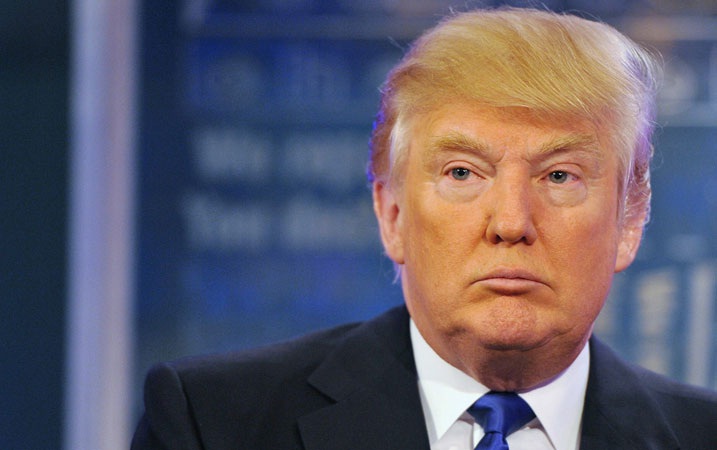By Dr. Nasrin Katona-The new National Security Strategy of the U.S. recalibrated Washington’s core interest in Afghanistan and the region, which was released on December 17, 2017. It manifests the U.S.A. expectations and interests in a quite different matter than President Obama’s NSS, especially regarding Afghanistan and the South Asian region.
Few points are considerable, first, America must seek a “honourable and enduring” outcome, a plan for victory to fight and to win.- the document points out that.
Second, the consequences of a rapid exit are both predictable and unacceptable. A hasty withdrawal would create a vacuum that terrorists would instantly fill. The U.S. must not repeat in Afghanistan the mistake of early withdrawal from Iraq.
Third, the security threats in Afghanistan and in the broader region, foreign terrorist organizations are active in Afghanistan and in Pakistan.
For its part, Pakistan often gives safe haven to agents of chaos, violence and terror. The threat is high. Pakistan and India are nuclear-armed states whose tense relations threaten to spiral into conflict. The Trump administration inherited a challenging and troubling situation in Afghanistan and South Asia. Big and intricate problems will be solved.
In Afghanistan and Pakistan, the American’s interests are clear: the resurgence of safe havens must be stopped that enable terrorists to threaten America, and must be prevented coming nuclear weapons into the hands of terrorists, and being used anywhere in the world.
To prosecute this war, the American strategy promised in the NSS 2018 dramatic changes in four core pillars:
First, a shift from a time-based approach to one based to conditions. This new strategy will be guided by particular conditions on the ground, not by arbitrary timetable.
The second core pillar is the integration of all instruments of the U.S.’s power: diplomatic, economic, and military, – toward successful outcome.
After an effective military effort, perhaps it will be possible to have a political settlement that includes elements of the Taliban in Afghanistan. Washington will continue its support for the Afghan government and the Afghan military as they confront the Taliban in the field. In the document and in previous speech of President Trump, Washington expressed it commitment to support the Afghan government and the Afghan military as they confront the insurgents in the field.
Third, it is up to the Afghan people to take ownership of their future, to govern their own complex society and to achieve lasting peace. The government of the United States is a partner, and will not dictate to the Afghan people how to live. Washington is no more nation-building, but running after terrorists.
Fourth, very important pillar of this new Afghan strategy to change the approach how to deal with Pakistan. The U.S. can no longer be silent about Pakistan’s safe havens for armed groups of terrorist organisations to pose a threat to the region and beyond. Pakistan has much to gain from partnering Washington’s efforts in Afghanistan and it has much to lose by continuing to harbour criminals and terrorists.
That will change. No partnership can survive a country’s harbouring of militants and terrorists, who target U.S. service members. It is time for Pakistan to demonstrate its commitment to civilization, order, and to peace.
Most relevant to South Asia, however, are the references to India and Pakistan, particularly when seen evolution, how Obama’s NSS of 2015 viewed both countries.
The new NSS promises to work with the countries of the region, including Pakistan to mitigate the threat from terrorism and to support a viable peace and reconciliation process to end the violence in Afghanistan and improve regional stability and continue to work both with India and Pakistan to promote strategic stability, combat terrorism and advance regional economic integration in South And Central Asia. The very first mention of Pakistan in the document refers to the threats from “militants operate from within Pakistan”, and the very final one that the U.S. will “insist that Pakistan take decisive action against militants and terrorist groups operating from its soil, a Pakistan that is not engaged in destabilising behaviour. Washington will press Islamabad “to intensify its counterterrorism effort”, promises that trade and investment relations will be built.”
The security strategy paper also reiterates Trump’s earlier stance on Pakistan’s “destabilising role in Afghanistan”, when he outlined his broad strategy in August. At that time he said “Pakistan often gives safe haven to agents of chaos, violence, and terror. The threat is worse because Pakistan and India are two nuclear armed states, whose tense relations threaten to spiral into conflict.”
The new strategy paper once again calls on Pakistan to desist from engaging in “destabilising behaviour” in Afghanistan, a clear call to end its “support for militants and terrorists” who target U.S. personnel and interests in the region. This, the paper alleges, can undermine the strategic relationship between the U.S. and Pakistan. As Rex Tillerson explained “we are going to be conditioning our support for Pakistan delivering results”
The U.S. needs Pakistan in three areas:
First, as a part of U.S. strategy to encounter China.
Second, as a part of U.S. strategy to curb terrorism emanating from Pakistan. Washington is not pleased with Pakistan. In picking a side, the U.S. government could be embolden India to carry on with its actions against Pakistan.
Third, the allusion to India’s economic assistance in the region clearly refers to Afghanistan. New Delhi and Kabul share cordial relations.
Fourth, three references to the India-U.S: defence partnership in a document which is fairly critical of Russia, could hint at President Trump’s willingness to take Moscow away striking better defence deals with India. “We welcome India’s emergence as a leading global power and stronger strategic and defence partner. The document proclaims that the U.S. will “support India’s leading role in the Indian Ocean security, and throughout the broader region.” “We will expand our defence and security cooperation with India, a Major Defence Partner of the U.S. and we will seek to increase quadrilateral cooperation with Japan, Australia and India. “We will encourage India to increase its economic assistance in the region”,- which is clear reference to Afghanistan.
Another critical part of South Asia strategy is to further develop strategic partnership with India, the world’s largest democracy, and a key security and economic partner of the U.S. Washington appreciates India’s important contributions to stability in Afghanistan. The government of New Delhi makes billions of dollars in trade with the United States, and can help it more in Afghanistan, especially in the areas of economic assistance and development, and committed to pursuing shared objectives for peace and security in South Asia and the broader Indo-Pacific region.
Afghanistan is fighting to defend and secure their country against the same enemies who threaten the United States of America as well. As stronger the Afghan security forces became, less will have to do. Afghans will secure and build their own nation and define their own future.
Washington will expand authority of American armed forces to target the extremist and criminal networks that sow violence and chaos throughout Afghanistan. It lifted restrictions and expands authorities in the fields, and seeing dramatic results to defeat ISIS, and will maximize sanctions and law enforcement actions against these networks to eliminate their ability to export terror.
Washington will no longer use American military might to construct democracies in faraway lands or try to rebuild other countries in its own image. Those days are now over. Instead, the U.S. will work with allies and partners to protect shared interests.
The United States of America will work with the Afghan government as long as sees determination and progress. However, Washington’s commitment is not unlimited, and its support is not a blank check. The government of Afghanistan must carry share of the military, political and economic burden. Real reforms, real progress, real results are needed.
In the mirror of this sharp recalibration of strategic objectives the recalibration of the U.S.-Afghanistan Strategic Partnership Agreement is expected being revisited by the above mentioned guidelines, from quantity-based approach to quality based one.
Presented at the U.S. – Afghanistan Strategic Partnership Agreement, President Trump’s Afghanistan, South Asia Strategy’s Seminar – Khost Province
Dr. Nasrin Katona Ph.D., C.Sc., D. Sc.
Director of Foundation for Afghanistan, Hungary
 Afghanistan Times
Afghanistan Times




